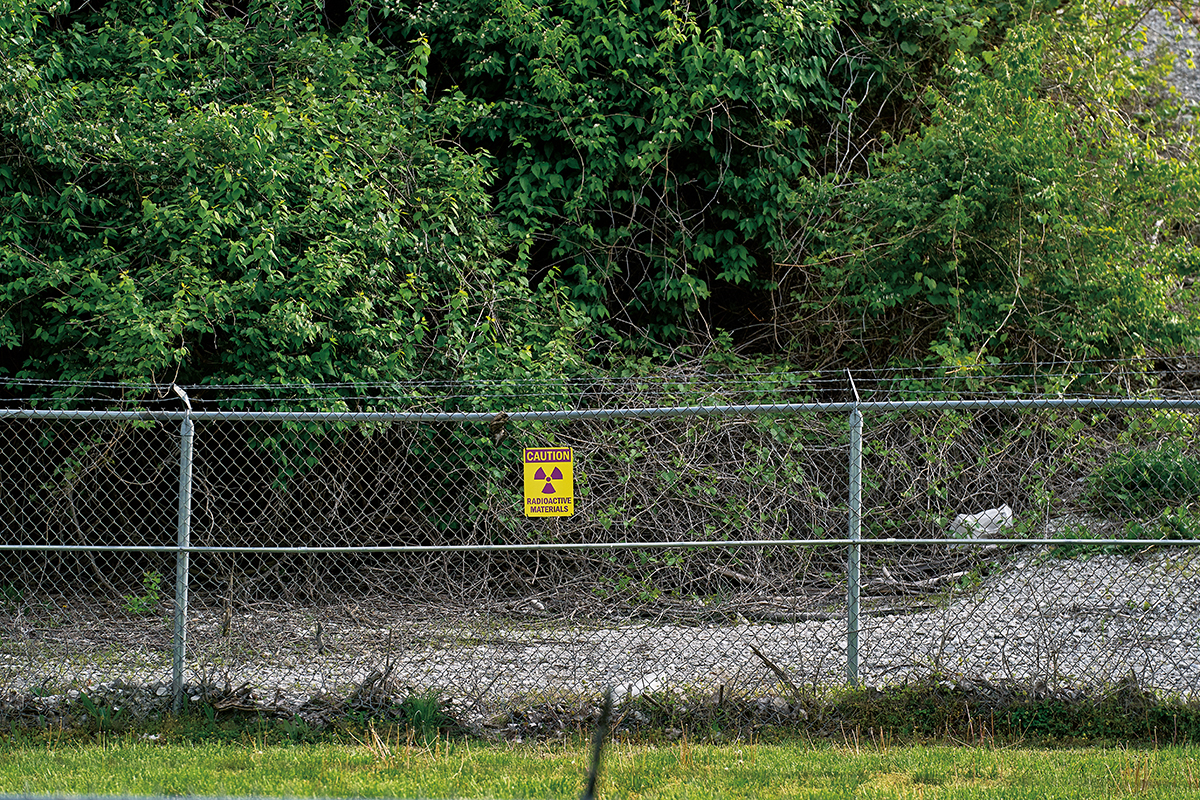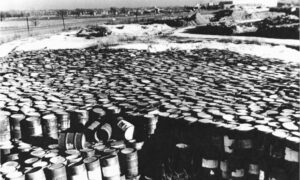5:55
News Story
Radium in groundwater near West Lake Landfill in St. Louis County forces more testing
The landfill contains thousands of tons of nuclear waste and byproducts from World War II-era atomic bomb development efforts
Crews working to clean up the West Lake Landfill in St. Louis County detected contamination in nearby groundwater, forcing the U.S. Environmental Protection Agency to investigate whether radium might have left the site.
In a periodic update to nearby communities last month, the EPA said it would add groundwater monitoring wells around the site, which sits in Bridgeton, about a mile from the banks of the Missouri River.
The expansion, which came after contamination was detected at the edge of the landfill, will help determine whether contamination may be migrating from the site and whether it could reach the river. Radium has been detected near the site at slightly above drinking water limits, the EPA said in a statement, but the radioactive element also occurs naturally in rock formations and aquifers.
Initially, the EPA had anticipated all necessary groundwater wells would be installed by August 2022, the project manager for the groundwater remediation at West Lake, Snehal Bhagat, said in a briefing in December.
“But the detections in offsite locations required a significant expansion of the network in order to delineate exactly where the impacts are found,” Bhagat said, “so a lot more wells were put in. We’re still putting them in as we chase the edges of the impacts.”
EPA: Radioactive contamination at West Lake landfill is more widespread
The West Lake Landfill, formerly a municipal landfill, is one of several sites in the St. Louis area contaminated by decades-old nuclear waste.
St. Louis was pivotal to the development of the world’s first atomic bomb in the 1940s. Uranium refined in downtown was used in experiments in Chicago as part of the Manhattan Project, the name given to the World War II-era nuclear weapons program.
After the war, radioactive waste from the downtown uranium plants was trucked to the St. Louis airport, often spilling off of trucks along the way, and dumped, unprotected on the ground next to Coldwater Creek. The creek, which runs through what are now bustling suburbs, was contaminated for miles, increasing the risk of cancer for generations of children who played on its banks and in its waters.
The waste sat at the airport for years before being sold and relocated to a property in nearby Hazlewood, also adjacent to the creek. In the early 1970s, after valuable metals were extracted from the waste, it was trucked to the West Lake Landfill and dumped illegally. It remains there today.
Now, the landfill is a Superfund site subject to EPA cleanup, and in recent years, the agency has discovered the contamination is more widespread than it thought. Despite outcry from the community, the EPA, for years, relied on a decades-old radiation reading taken from a helicopter to determine where the waste was.
Now, it’s working to determine the “size and mobility of the plume.”
“To date, no conclusions have been made about the source(s) of the radium in off site groundwater because data collection is ongoing,” Kellen Ashford, a spokesman for the EPA’s regional office said in an email.
Dawn Chapman, a co-founder of Just Moms STL, a nonprofit that formed to advocate for communities near contaminated sites around St. Louis, said she was concerned that the EPA hadn’t yet identified the edges of the contamination.
Given both the radioactive waste and the other chemical contaminants that are in the landfill, she feared it could be “one hell of a nasty plume.”
Chapman noted the parties responsible for the site — the landfill’s owner, the company that dumped the waste and the U.S. Department of Energy — are nearing the end of the process to plan the cleanup at West Lake.
“I really would have hoped,” Chapman said, “that by now they would have found the edge.”
GET THE MORNING HEADLINES.
YOU MAKE OUR WORK POSSIBLE.
Our stories may be republished online or in print under Creative Commons license CC BY-NC-ND 4.0. We ask that you edit only for style or to shorten, provide proper attribution and link to our website. AP and Getty images may not be republished. Please see our republishing guidelines for use of any other photos and graphics.





